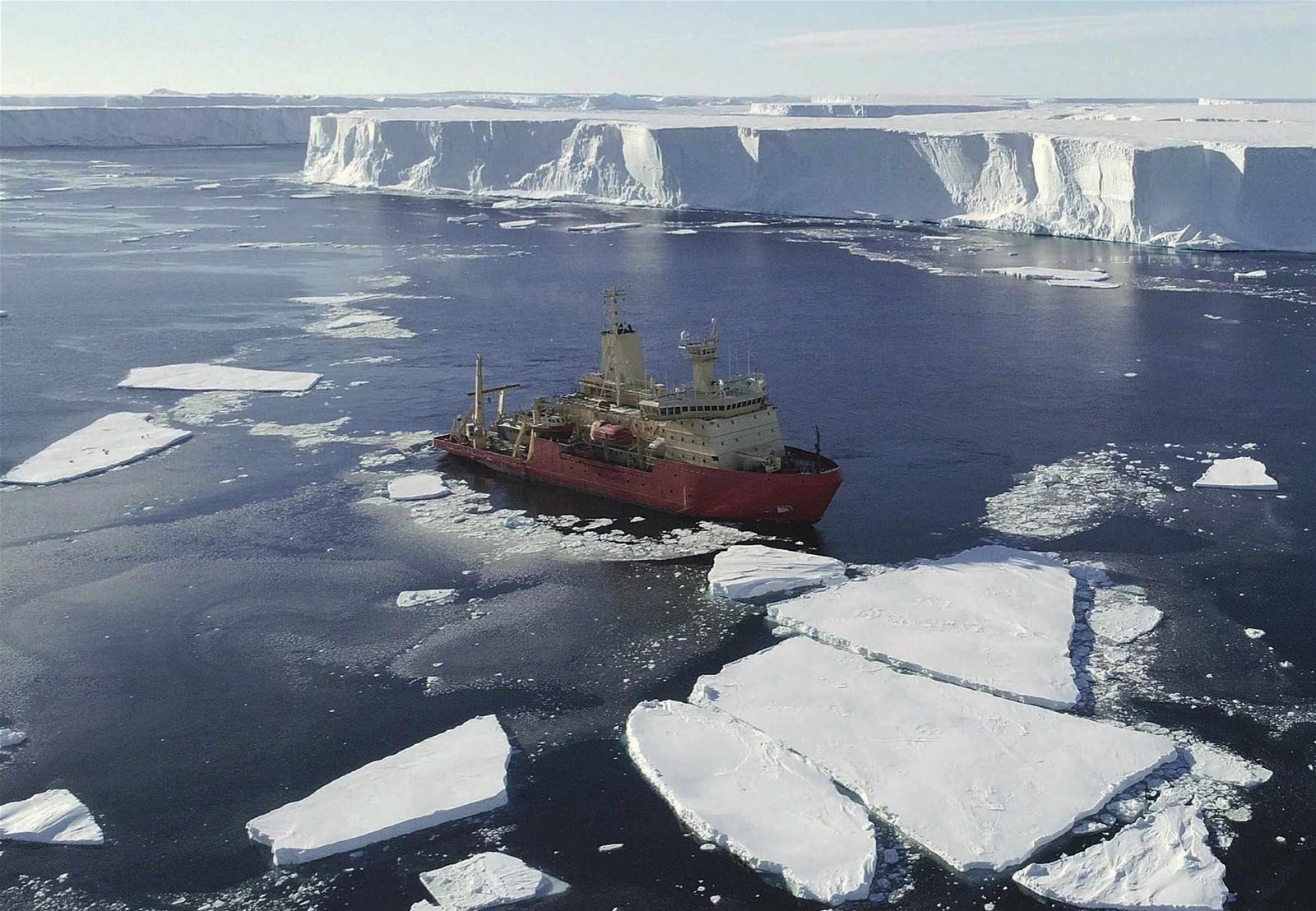
ABOVE The Thwaites Glacier is estimated to have had a net loss of approximately 1,000 billion tonnes of ice since the turn of the century
BRITISH ANTARCTIC SURVEY X3
One of West Antarctica’s most infamous glaciers, nicknamed the ‘Doomsday Glacier’ due to its potential to trigger coastline-altering amounts of sea level rise, is changing rapidly in response to climate change.
The Thwaites Glacier, to give its proper name, is the widest glacier in the world, measuring 120km (74 miles) across, and covers an area larger than the US state of Florida. It’s a frozen river of ice that snakes down from the tip of the West Antarctic Ice Sheet until it meets the Amundsen Sea, where it spreads out into a floating platform of ice, known as an ice shelf.